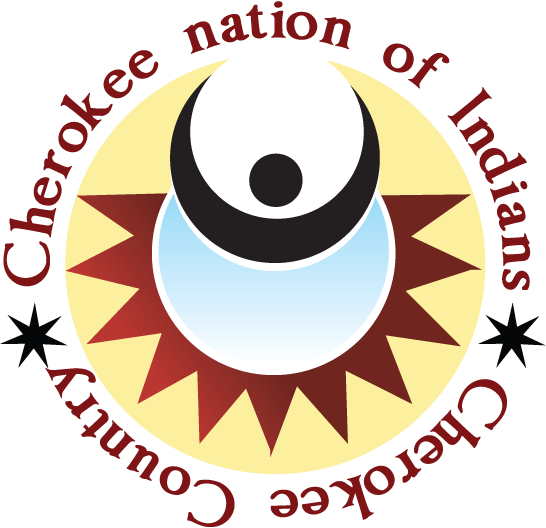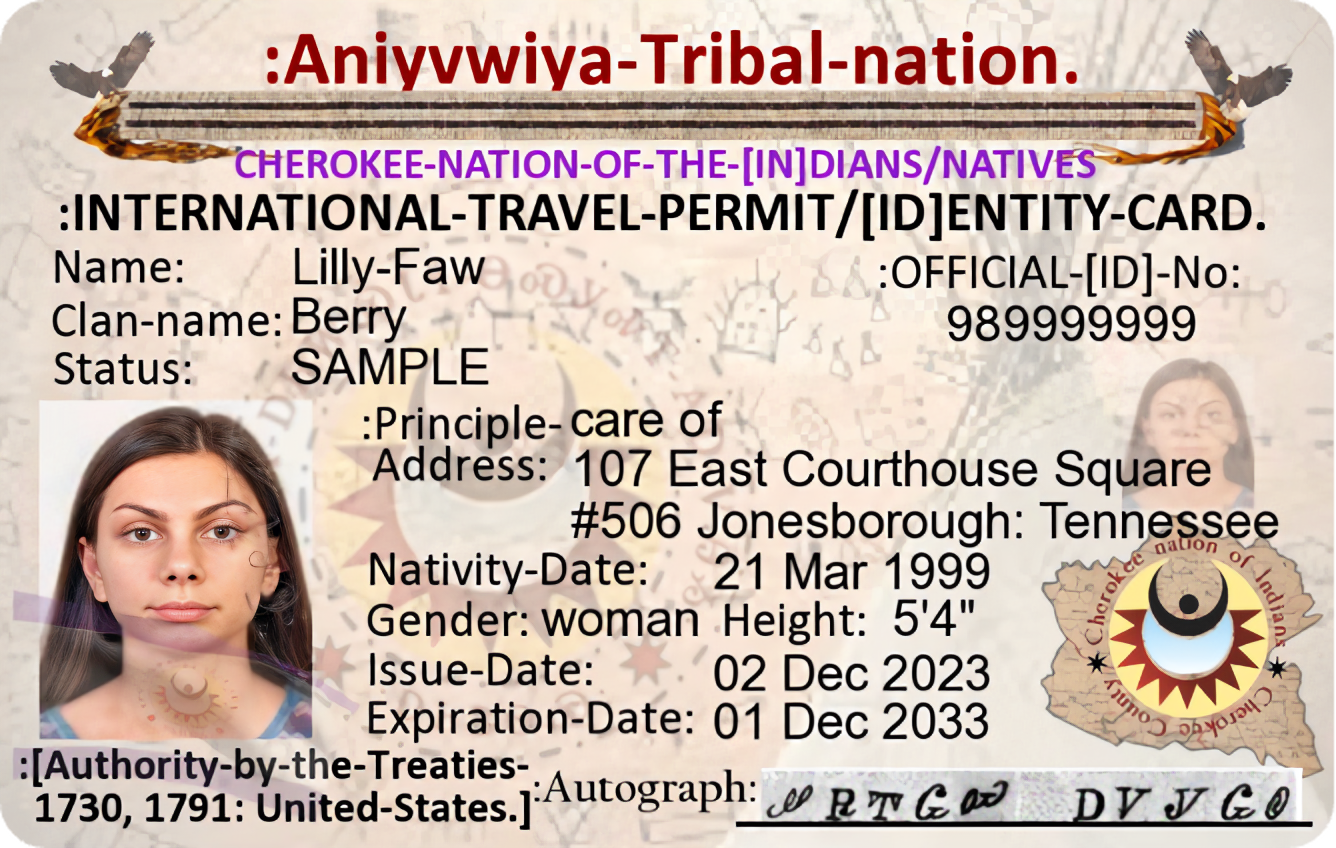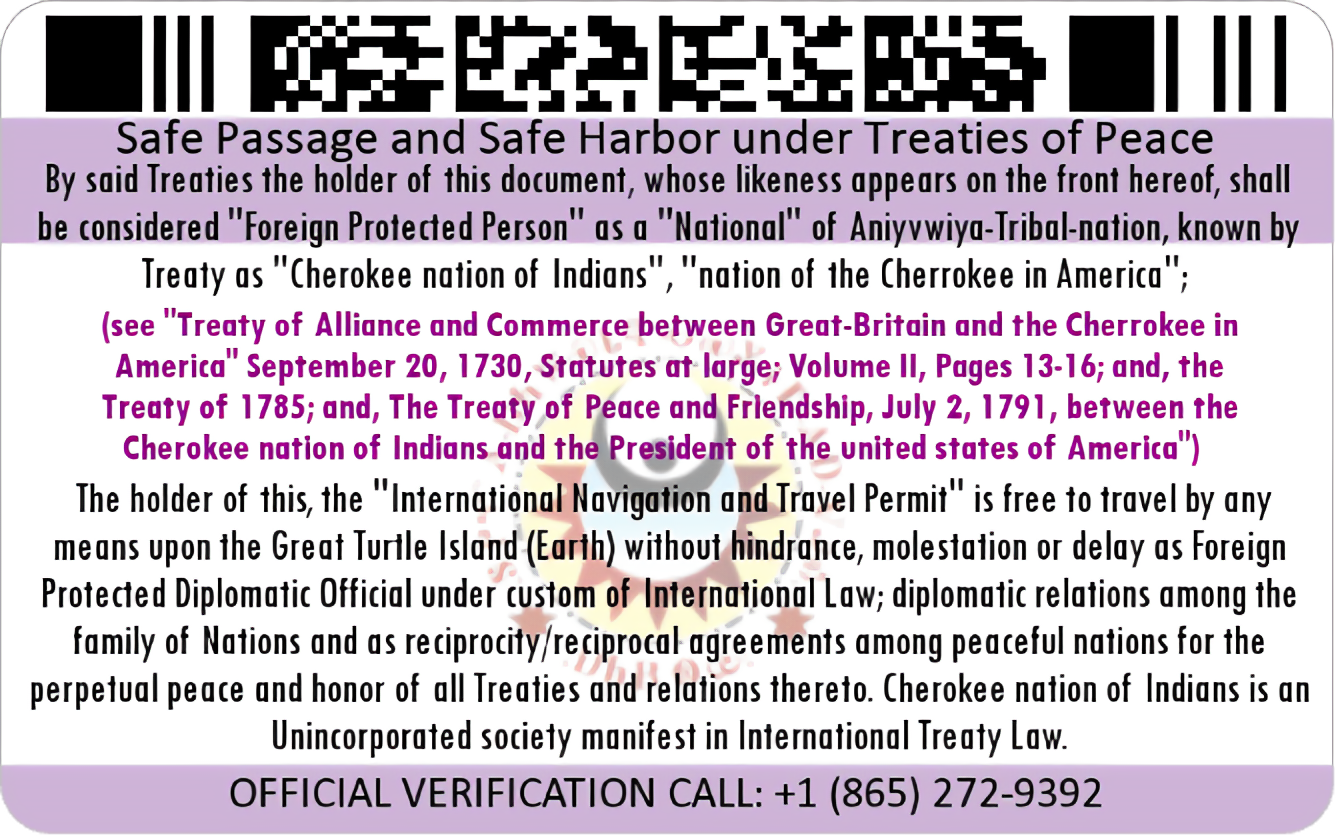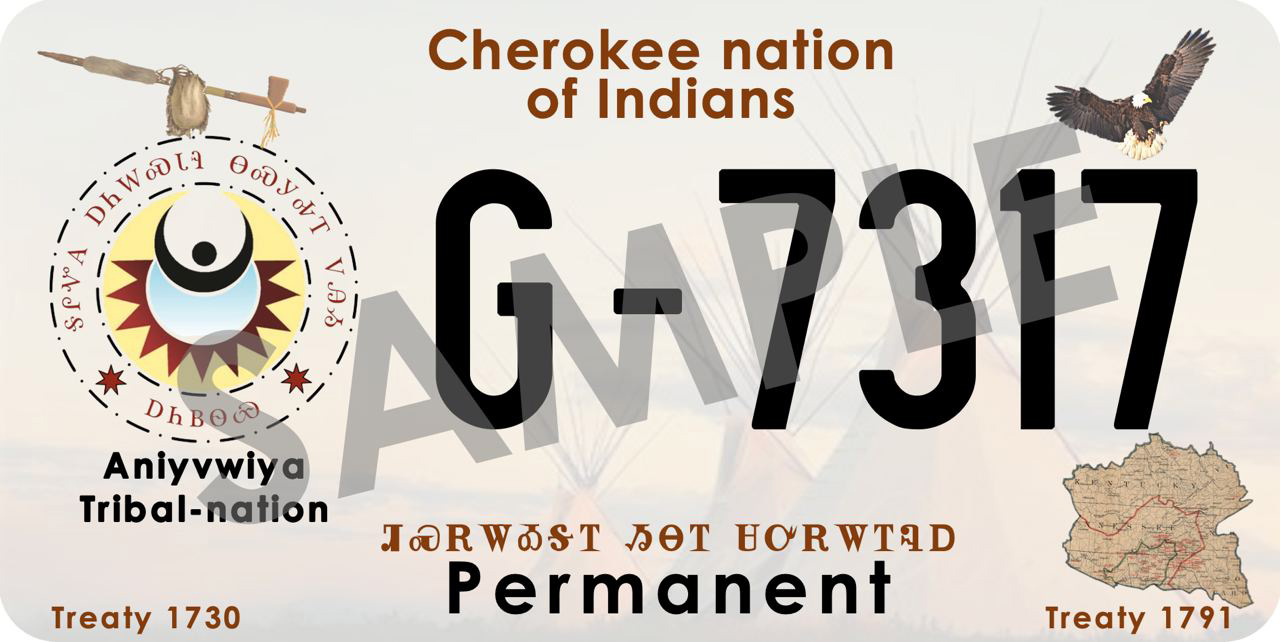Aniyvwiya
(Principle People)
The Aniyvwiya are a genuine people from these native lands, having thousands of years of oral, graphic, and written history, expressing our culture and tradition. Our history consistently demonstrates that the Aniyvwiya have always been rich in our values for its remaining 7 clans, families, and for the expansion of our sacred ways.
The Aniyvwiya are the foundation of the Cherokee nation of Indians even though the “Cherokee” or its older spelling “Cherrokee” have no meaning in our language, and was first used by the English in treaties with the Aniyvwiya.
The Aniyvwiya people are dedicated to protecting Mother Earth, living by the ways of the one true Great Spirit and to restoring the quality of life for all our people.


Cherrokee in America
Having a common interest with the colonists against the invasions and trespasses of King George II, the Aniyvwiya people joined with colonists averse to tyranny and to aid in their resistance of the over-reaching efforts of the Crown.
The Treaty of alliance and commerce between Great-Britain and
the nation of the Cherrokees in America, September 20, 1730 settled those conflicts and established a peace and means of conducting commerce.
Cherokee nation of Indians
CNOI ORIGIN
As European colonization entered the native lands of the Anivywiya people, resources and trade traditions overlapped causing controversies and conflicts which required treaty resolutions in order to provide the methods of reciprocity required between nations for maintaining the peace and mutual prosperity.
A Treaty of Peace and Friendship a.k.a. the Treaty of Holston, July 2nd, 1791 (under president George Washington) is the treaty where the Aniyvwiya are granted the title Cherokee nation of Indians (CnoI), a title recognized by the United States of America for doing commerce.

Our Duty
We are known to live freely and fully as men and women, in oneness and unity with Mother Turtle Island as her sacred keepers.
The Principles We Live By
values
• Grace, Honor, Respect, Gratitude, Integrity, Equity, Harmony and Parity.
• We are Spirits who stand as men and women who are living
privately.
• The Golden Rule: Do No Harm; do unto others as you would have them do unto you.

Two Row Wampum Belt of 1613
Our first treaty is the Guswenta Treaty or Two Row Wampum Belt Treaty of 1613. The Aniyvwiya base our philosophy of co-existing with other sovereign nations from the Two Row Wampum Belt Treaty between the Iroquois (Haudenosaunee) and the Dutch. It also memorializes the Dutch recognizing the sovereignty of the Haudenosaunee of which the Aniyvwiya are related.

The wampum belt recorded the meaning of the agreement. The pattern of the belt consists of two rows of purple wampum beads against a background of white beads. The purple beads signify the courses of two vessels — a Haudenosaunee canoe and a European ship — traveling down the river of life together, parallel but never touching. The three white stripes denote peace and friendship.
Whitehall Treaty of 1730
Cherrokee in America
Our second treaty, the Treaty of Whitehall in 1730, The Articles of Trade and Friendship, was signed in England between King George II and seven Cherokee Chiefs. King George hosted the Chiefs for three months in London before the signing of the treaty.
King George II pledged: “A chain of friendship between the King of Great Britain and the Cherrokee nation to perpetuate this treaty of peace and friendship between the English and the Cherrokees, as long as the mountains and rivers arc in being, and as long as the sun shall shine."
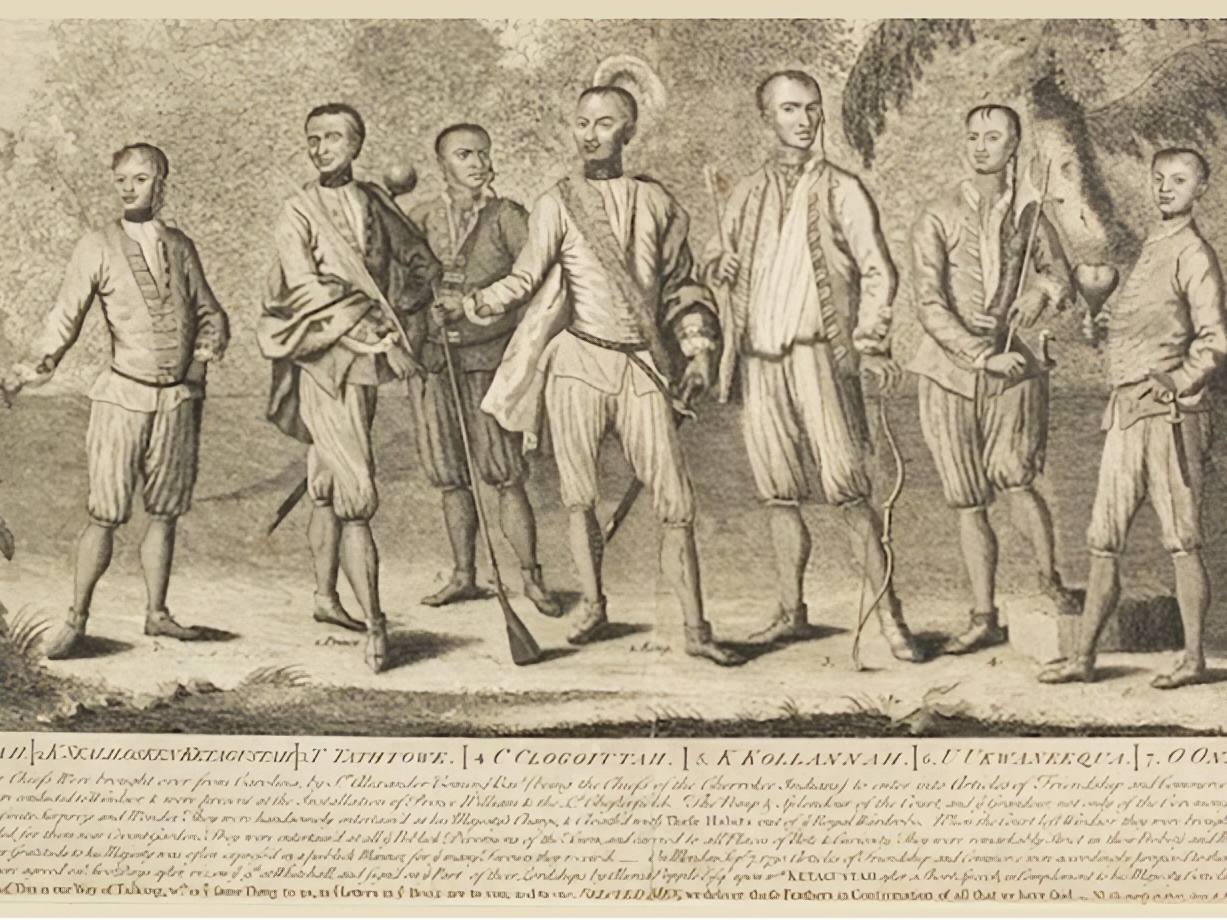
Treaty of Holston 1791
The third treaty, known as the Treaty of Holston (or the "Treaty of Peace and Friendship"), was established in 1791.
It was a treaty aimed at establishing permanent peace and friendship between the United States of America and the Cherokee nation of Indians.

Our Nation's Flag

The word for seal, or the syllabic for seal is ᎠᏐᎠᏍᏙ this is Asoasdo.
Two rows of Purple color and a white center are the image of a wampum belt traditionally made from the Welk and Quahog Clam shells. The Guswenta Treaty, or two row belt, symbolized the sharing without interference such as two boats rowing on the same water and sharing the resources.
The seal of the Flag placed in the center on the 3 x 6 ratio stating in the sequoia syllabus text reads as follows:
On the top section of the arch shall read:
ᎦᎵᏉᎪ ᎠᏂᎳᏍᏓᎸ ᎾᏍᎩᎭᎢ ᏙᎯᏱ
seven tribes for peace
The top and bottom separated by seven point stars, and; the Bottom section of the arch shall read:
ᎠᏂᏴᏫᏯ
Aniyvwiya or principle people
The symbol in the center is a reflection of our balance with the creation of the great spirits.
The eclipsed earth and moon floating in the blue sky all recieving the rays of the sun, producing the life light for our abundance.
TERRITORY
The Lands of the Aniyvwiya
Below is the Cherokee Country Map established by Metes and Bounds from the Holston Treaty of 1791. The Aniyvwiya Nation has roots throughout the Americas that extend thousands of years into the past. In the Americas, the Aniyvwiya were the mountaineers of the South, holding the entire Allegheny region. Our tribal lands were called Turtle Island, most of what is now referred to as North America.

International
Tribal Credentials
– View samples of Aniyvwiya travel credentials.
– Click the arrows on either sides of the image to see more images.
– Click any image to zoom in. Click again to zoom back out.
Contact CnoI
INQUIRIES
All inquiries from a foreign country:
Email: consulate@cnoi.life
Mail: c/o Cherokee nation of Indians
107
Courthouse Sq - #506
Jonesborough, Tennessee [37659]
Cherokee
Country
For CnoI credential verifications:
Please contact our CnoI Counselate for International Affairs at
Phone: + 1 -865-272-9392
Email: validations@cnoi.life
For information concerning Trade and Commerce or Import / Export, check with Cherokee nation of Indians at: 1-865-272-9392
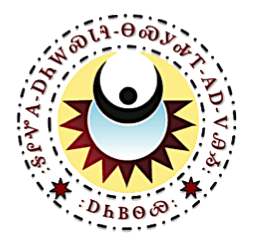

Treaty of Holston 1791, "A Treaty of Peace and Friendship", Article IV
The boundary between the citizens of the United States and the Cherokee nation, is and shall be as follows:
Beginning at the top of the Currahee mountain, where the Creek line passes it; thence a direct line to Tugelo river; thence north east to the Occunna mountain, and over the same along the South-Carolina Indian boundary to the North-Carolina boundary; thence north to a point from which a line is to be extended to the river Clinch, that shall pass the Holston at the ridge which divides the waters running into Little River from those running into the Tennessee; thence up the river Clinch to Campbell’s line, and along the same to the top of Cumberland mountain; thence a direct line to the Cumberland river where the Kentucky road crosses it; thence down the Cumberland river to a point from which a south west line will strike the ridge which divides the waters of Cumberland from those of Duck river, forty miles above Nashville; thence down the said ridge to a point from whence a south west line will strike the mouth of Duck river.
And in order to preclude forever all disputes relative to the said boundary, the same shall be ascertained, and marked plainly by three persons appointed on the part of the United States, and three Cherokees on the part of their nation.
And in order to extinguish forever all claims of the Cherokee nation, or any part thereof, to any of the land lying to the right of the line above described, beginning as aforesaid at the Currahee mountain, it is hereby agreed, that in addition to the consideration heretofore made for the said land, the United States will cause certain valuable goods, to be immediately delivered to the undersigned Chiefs and Warriors, for the use of their nation; and the said United States will also cause the sum of one thousand dollars to be paid annually to the said Cherokee nation. And the undersigned Chiefs and Warriors, do hereby for themselves and the whole Cherokee nation, their heirs and descendants, for the considerations above-mentioned, release, quit-claim, relinquish and cede, all the land to the right of the line described, and beginning as aforesaid.
